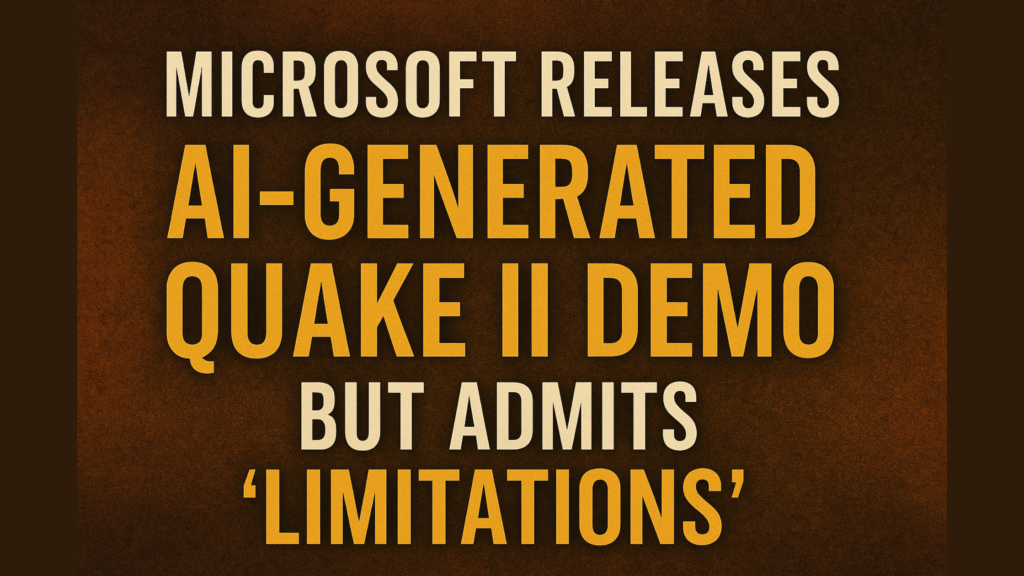Have you noticed that when you search something on Google, ChatGPT, or Perplexity these days, you often get an instant answer instead of a list of links?
That’s not just a trend, it’s a major shift in how people discover information. And if you’re a content creator, business owner, or marketer, there’s a new strategy you need to know: Generative Engine Optimization, or GEO.
In this guide, I’ll walk you through what GEO is, how it’s different from SEO, why it matters, and how to get started even if you’re brand new to the concept.
What is GEO?
Generative Engine Optimization (GEO) is the practice of optimizing your content not just for human readers or Google search crawlers, but for AI-powered tools like ChatGPT, Google’s Gemini, and Perplexity AI.
Instead of chasing rankings on Google, GEO helps you get cited in AI-generated answers.
“In SEO, you’re ranked. In GEO, you’re referenced.” – Amish Keshwani
This means your content is shown directly inside AI answers, like being quoted in an article, without users having to click a link.
GEO vs SEO: What’s the Difference?
Let’s break it down in simple terms:
| Feature | SEO (Old Way) | GEO (New Way) |
|---|---|---|
| Goal | Rank on search engine pages | Be cited in AI-generated answers |
| Audience | Human readers + search crawlers | Large Language Models (LLMs) |
| Format | Blog posts, landing pages | Context-rich FAQs, guides, lists |
| Signals | Keywords, backlinks, meta tags | Schema markup, clarity, brand mentions |
| Outcome | More clicks | More citations in AI tools |
SEO is still useful, but GEO is the layer above it. If your content doesn’t get picked by AI tools, you’re missing out on visibility.
Why GEO Matters in 2025
Let’s look at the numbers:
- Over 40% of U.S. searches now include AI summaries (StatCounter, 2024).
- Perplexity AI has over 10 million monthly users.
- ChatGPT with browsing is influencing purchase decisions, even without users clicking a link.
That means people are skipping websites and trusting AI-generated summaries. So if AI doesn’t mention you, you’re invisible.
How to Make Your Content GEO-Ready
Here are the 5 pillars to focus on:
1. Content Structure
AI tools scan your content structurally, not like humans do.
Make sure you use:
- Clear H1, H2, H3 headings
- First 2–3 lines that directly answer the user’s intent
- Bullet points and numbered lists
- FAQs with common user questions
- Internal links that support topical relevance
AI prefers content that’s clean, clear, and skimmable.
2. Schema Markup
Schema is the language AI understands best. It helps AI tools identify what your content is about.
Use the right types of schema for your business:
| Schema Type | Best For |
|---|---|
| FAQ | Guides, support, common queries |
| Product | Ecommerce, reviews, comparisons |
| HowTo | Tutorials, step-by-step processes |
| Review | Testimonials, user opinions |
| LocalBusiness | SMBs and local services |
| Organization | B2B brands, D2C founders |
Use Google’s Rich Results Test to check if your pages are schema-ready.
3. Off-Site Mentions
Here’s the secret: AI reads more than just your website. It pulls from:
- Reddit, Quora, Medium
- YouTube transcripts
- Google Business reviews
- Listicles from lifestyle blogs
- Product comparison posts
- Public PDFs, SlideShare, GitHub
So if you’re mentioned elsewhere, especially by real users, AI sees you as more trustworthy.
4. Build Citable Authority
Want to be quoted by AI? Then you need to publish the kind of content AI trusts:
- Side-by-side comparisons
- Original case studies
- Real customer reviews
- “How-to” tutorials
- Founder stories with clarity
- Research-backed blog posts
Even if you’re not a big brand, you can still get cited if your content is clear, useful, and structured.
GEO for Your Business Type
Here’s how different businesses can apply GEO:
B2B: Share Expertise
- Create whitepapers, SlideShare decks, and analyst-style blogs.
- Add schema with author, publish date, and organization info.
- Aim to get featured in industry blogs, Medium, LinkedIn newsletters.
B2C: Win the “Best For” Queries
- Launch a blog titled: “Best Sunscreens for Oily Skin Under ₹500.”
- Get mentioned in YouTube videos or Reddit threads.
- Collect user reviews and display them with schema.
SMB: Own Local Search
- Write blogs like “How to Choose a Rooftop Solar Installer in Pune.”
- Use LocalBusiness schema.
- Keep your Google Business Profile updated with Q&As.
Ecommerce: Make PDPs AI-Friendly
- Add product specs, warranty info, and pros/cons tables.
- Use Product, Offer, and Review schema.
- Build internal FAQ sections.
D2C: Tell Your Story Everywhere
- Create a well-structured “Our Story” page.
- Be featured on Product Hunt, Substack, or lifestyle blogs.
- Seed reviews on Reddit, YouTube, and other community platforms.
How to Know If You’re GEO-Ready
Use this mini checklist:
- Your blog content answers user intent in the first 3 lines
- You use schema markup (FAQ, Review, Product, HowTo)
- You’re mentioned on at least 5 third-party platforms
- You’ve tested prompts on ChatGPT or Perplexity to see if you show up
- Your content is structured for clarity, not fluff
Tools to Track GEO Performance
- Peec.ai – See where you’re cited in Google AI Overviews
- Perplexity Pro – Monitor summary and source mentions
- Ahrefs Alerts – Get notified when your brand is mentioned
- ChatGPT & Gemini – Manually test prompts in your niche
Final Thoughts: GEO Is the Future
Search is no longer about blue links, it’s about answers first, sources second. And if AI can’t find or understand your content, it won’t mention you.
So stop asking, “What’s my SEO ranking?”
Start asking, “What does AI say about me when someone asks?”
That’s the power of GEO.
Ready to Get Started?
Choose one action to do this week:
- Publish an AI-ready blog with FAQs and schema
- Test your brand visibility in ChatGPT or Perplexity
- Update your “About Us” page with your story
- Get one product or article featured on a third-party site

